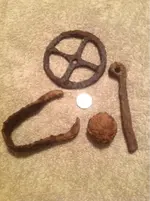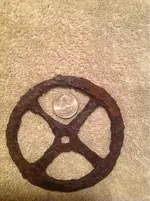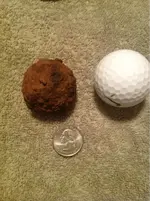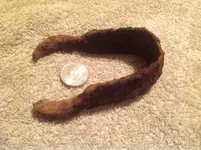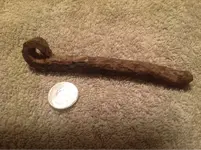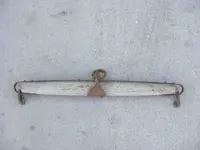The iron ball's finder, Drew_dumas, wrote:
> Pretty sure the "cannon ball is part of a grapeshot round.
There are literally multi-millions of Industrial iron (and steel) balls in existence, not manufactured to be Artillery projectiles, So, we cannonball collectors have to do extremely precise measuring to determine with
certainty whether or not an iron ball we've found really is an Artillery projectile.
Fortunately for us collectors, the very-precise sizes and weight of historical cannonballs (and Grapeshot balls, and Canister balls) were recorded in the Artillery Ordnance Manual Of 1861. Its data covers artillery ammunition from the Revolutionary War through the civil war. You can view the historical data online, for free, at
Cannon bore, shot, and shell diameters for smoothbore guns
Comparing the quarter with the iron ball in your photo, the ball appears to be "about" 2 inches in diameter. But it is covered with a thick layer of rust-crust. You'll need to bash off the rust-crust with a hammer (don't worry, no explosive cannonballs were 2 inches or less in diameter). After cleaning, measure the ball's diameter precisely, using Digital Calipers to get the diameter-measurement in hundredths-of-an-inch, and tell us its exact size. If it matches up
precisely with one of the sizes in the Ordnance Manual's charts, it is an artillery ball. If it doesn't match any, it is an Industrial ball, or ball-bearing, etc.
BosnMate is correct, if its de-rusted diameter is any less than 2.02-to-2.06 inches, it is too small to be a Grapeshot ball. It
might be a Canister ball. (Canister is basically a sort of shotgun buckshot ammo for cannons, being a tin can filled with dozens of balls, much larger than shotgun buckshot.) But to really be a Canister ball, it
must match up
exactly with one of the Canister-ball sizes in the Ordnance Manual's size-chart.

